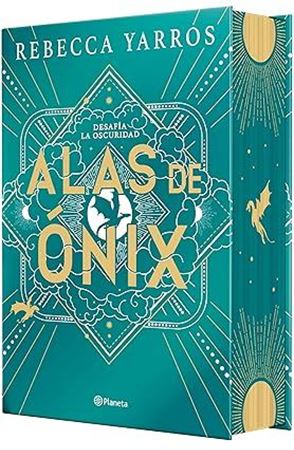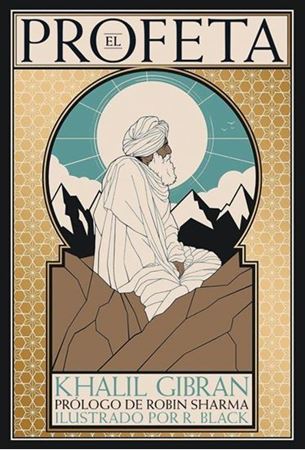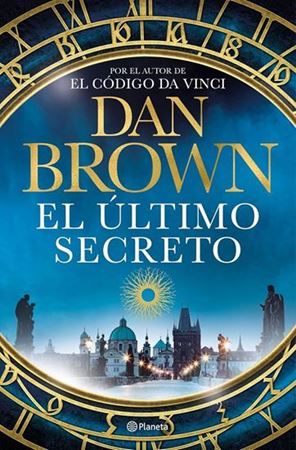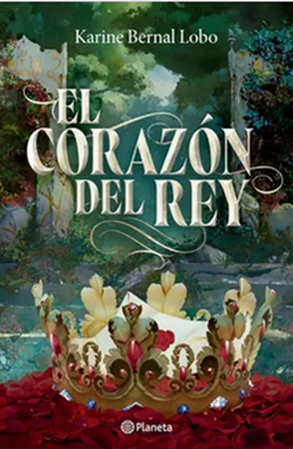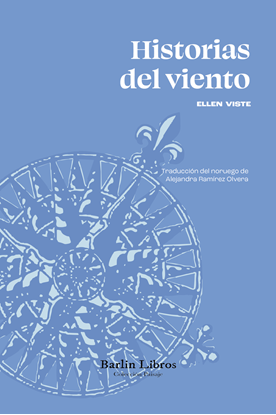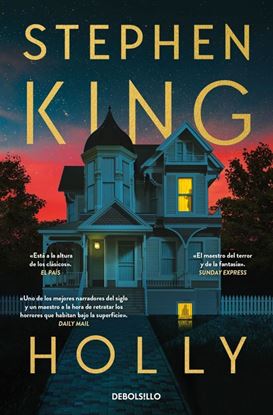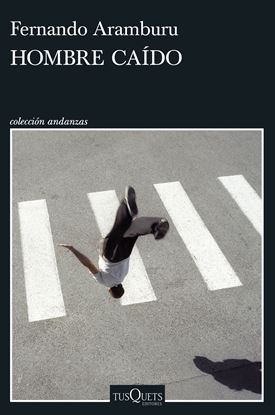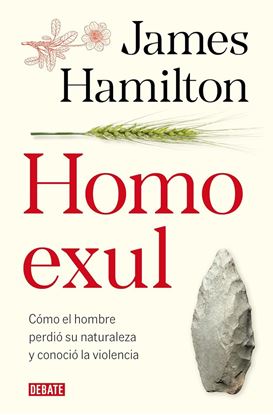

NOVEDADES
HISTORIAS DEL VIENTO
El viento es un elemento natural omnipresente que, pese a su carácter etéreo, ha contribuido a modelar nuestro planeta. Una fuerza poderosa y viva que, más allá de su conexión con la tierra y sus elementos, guarda también una correlación con las distintas civilizaciones humanas que, a lo largo de los tiempos, y de muy diversas formas, lo han venerado, temido, respetado y estudiado, como una parte consustancial de nuestra cultura.
La meteoróloga Ellen Viste nos revela, a través de asombrosos relatos que aúnan ciencia, historia y viajes, los secretos del aire que respiramos, y el modo en que el viento ha conectado a los distintos pueblos a lo largo de los siglos. Desde los primeros exploradores que decidieron dejarse llevar por los alisios en busca de lo desconocido —creando, gracias a ello, el primer mapamundi—, pasando por fascinantes periplos en globo, la violencia salvaje de tormentas, huracanes y tifones, o su importancia vital como propagador de semillas y del agua que almacenan las nubes.
Historias del viento es un recorrido cargado de lirismo, que nos enseña cómo este elemento, ya desde la mitología de los antiguos, resulta determinante en nuestra forma de ordenar y comprender el mundo, y nos invita a admirarlo desde el asombro y la fascinación, en un impulso tan sutil como constante que mece nuestra curiosidad.
1,500
HITLER Y STALIN. VIDAS PARALELAS
La monumental biografía doble que sitúa los orígenes, la personalidad, la carrera y el legado de Adolf Hitler junto a los de Iósiv Stalin, su implacable antagonista y espejo moral.
Si hubiera que personalizar el siglo XX en dos individuos, sin duda estos serían Stalin y Hitler. Siguiendo la pauta de Plutarco, el insigne historiador británico Alan Bullock escribió una magna obra sobre ambos personajes que se ha convertido en un clásico contemporáneo y que ahora se rescata para el lector del siglo XXI.
Bullock no solo nos relata en detalle sus vidas, sino que destaca los enigmáticos paralelismos de sus trayectorias, y concluye que la clave para entender ambas personalidades es la misma. Su escritura ha sido ampliamente elogiada por el magnífico equilibrio entre la profundidad de los análisis y la visión de conjunto de unos personajes históricos que marcaron la época que les tocó vivir.
3,350
HOCES DE PIEDRA, MARTILLOS DE BRONCE
Nuestra historia más remota bajo una luz absolutamente innovadora, que descubre cómo se organizaban nuestros ancestros y responde a una pregunta clave: ¿existió el comunismo en la prehistoria de la península Ibérica?
La historia de las personas anónimas que construyeron las milenarias piedras de los dólmenes de la península Ibérica no se ha contado aún. Fueron hombres y mujeres sorprendente-
mente parecidos a nosotros, y las nuevas técnicas de la arqueología actual nos permiten recuperar por primera vez las fascinantes sutilezas de su vida social y política.
En Hoces de piedra, martillos de bronce, el arqueólogo Rodrigo Villalobos nos sumerge en un pionero viaje a la prehistoria ibérica. Contemplaremos nuestra historia más remota bajo una
luz absolutamente innovadora y descubriremos las formas en que nuestros ancestros organizaron su existencia. Ya fuera en sociedades comunalistas democráticas o bien bajo el yugo de auténticas aristocracias guerreras que se erigieron como gobernantes de los primeros Estados arcaicos, nuestros antepasados protagonizaron una historia apasionante, en la que los episodios de trabajo cooperativo y apoyo mutuo convivieron con situaciones de explotación, opresión y dominación.
Hoces de piedra, martillos de bronce es una novedosa e imprescindible visión del pasado prehistórico de España.
1,550
HOGAR, DULCE HOGAR
La familia Santana se acaba de mudar. La nueva casa está muy contenta. Quiere hacer todo lo posible para ayudarlos a crear un HOGAR, DULCE HOGAR. Al principio todo va genial, pero pronto las cosas empiezan a torcerse y no paran de pelear. Para mejorar el ambiente, cada uno de ellos tendrá que poner de su parte. Parece fácil, pero... ¿serán capaces?
QUERIDA FAMILIA:
el buen ambiente no aparece MÁGICAMENTE.
No se trata de ser una casa perfecta e ideal.
¡No! Eso NO sería real.
Pero SÍ que todos sus miembros, aunque estén liados, se preocupen de que los demás se sientan amados y respetados.
Y así conseguir que todos sintamos, sin DUDAR,
que esta casa, sí que sí, es un…
HOGAR, DULCE HOGAR.
1,250
HOLD ME
Los sueños de Zoe se hacen realidad al ser aceptada en la prestigiosa New England School of Ballet, a pesar de que ello signifique reencontrarse con Jase, el chico que conoce todos sus secretos. Excepto uno: por qué rompió el contacto con él hace un año. A Jase tampoco le entusiasma la perspectiva; ya tiene suficiente con sus padres, que no aceptan su sueño de bailar, así que no necesita tener a ella y su silencio cerca. Pero cuando Zoe y Jase son asignados como pareja de baile, se verán inevitablemente atraídos el uno hacia el otro, así como al pasado que nunca podrían olvidar...
1,400
HOLLY (BOL)
Cuando Penny Dahl contacta con Finders Keepers para que la ayuden a encontrar a su hija, algo en la voz desesperada de la mujer hace que Holly Gibney se vea obligada a aceptar el trabajo.
A poca distancia del lugar en el que Bonnie Dahl desapareció, viven los profesores Rodney y Emily Harris. Son la quintaesencia de la respetabilidad burguesa: un matrimonio octogenario y dedicado de académicos semiretirados. Nadie diría que, en el sótano de su impecable casa forrada de libros, esconden un secreto directamente relacionado con la desaparición de Bonnie.
Son astutos, pacientes y despiadados, y obligarán a Holly a emplear sus habilidades al máximo y a arriesgarlo todo si quiere cerrar el caso más oscuro al que se ha enfrentado jamás.
1,100
HOLOCAUSTO. HISTORIA Y MEMORIA
En “Holocausto: Historia y memoria”, Jeremy Black, el autor de “Breve historia de la historia”, retoma su brillante y desgarrador relato de la brutal matanza masiva de judíos durante la Segunda Guerra Mundial y el posterior recuerdo u olvido de este genocidio. Black desafía la opinión predominante que separa el Holocausto de los objetivos militares de Alemania con pruebas convincentes de que la guerra de Alemania contra los Aliados estaba profundamente entrelazada con la guerra de Hitler contra los judíos. A medida que Hitler ampliaba su control sobre más territorios, el exterminio de los judíos se convirtió en un importante objetivo de guerra, especialmente en el este. Mucho antes de la creación de los campos de exterminio, el ejército alemán y sus colaboradores llevaron a cabo fusilamientos masivos que causaron la muerte de muchas personas y el exterminio de comunidades judías enteras. En particular, el ataque de Rommel a Egipto fue un paso crucial hacia el objetivo más amplio de aniquilar a 400.000 judíos que vivían en Palestina. Además, Hitler interpretó el hecho de que Estados Unidos se centrara inicialmente en la guerra contra Alemania, y no contra Japón, como una prueba de la influencia de los intereses judíos en la política estadounidense, lo que justificó e intensificó aún más su guerra contra los judíos mediante la Solución Final. Con escalofriantes detalles, Black también desvela pruebas convincentes de que muchos alemanes de a pie debían de ser conscientes del genocidio que se estaba produciendo a su alrededor.
2,150
HOMBRE CAIDO
Una mujer que deja de cuidar a sus padres enfermos para fotografiar ardillas en el parque, un joven que asegura a su hermano que le ha vengado de la paliza que le dieron, un padre que sale a comprar un gran peluche de segunda mano y se encuentra con una historia inesperada, un hombre caído al que no pueden ayudar los transeúntes... Los cuentos del nuevo libro de Aramburu van de la emoción al terror, del absurdo a la sorpresa y el humor, de la angustia a la más inquietante normalidad, y todas son inolvidables. El nuevo libro de Fernando Aramburu es una lúcida inmersión en la naturaleza humana: desde la soledad de quienes no son comprendidos hasta el comportamiento con nuestros vecinos caídos en desgracia, desde las interioridades de las parejas a rivalidades de por vida, las envidas o los sentimientos más inconfesables.
1,450
HOMO EXUL. COMO EL HOMBRE PERDIO SU NATU
«¿Por qué fui abusado?». En busca de las respuestas a esa pregunta, el cirujano digestivo chileno James Hamilton, quien obligó a modificar las políticas pontificias en la prevención de abusos y logró que los abusos a menores y adolescentes no prescribieran en su país, se embarcó en una profunda investigación para entender el origen de la violencia y el mal en el ser humano.
Homo Exul indaga en la pregunta de por qué, en un momento preciso de la historia, los homínidos dejaron de cooperar y comenzaron a mostrar conductas violentas. Defiende, además, que la mayoría de dolencias y enfermedades crónicas que hoy nos afectan (desde la obesidad hasta el alzhéimer) son consecuencia de ese mismo proceso evolutivo que, por fuerza, conllevó importantes cambios sociales y alimenticios en adultos, niños y lactantes.
Lanza, además, una importante pregunta: ¿estamos a tiempo de revertir estas marcas evolutivas y convertirnos de nuevo en una sociedad cooperativa?
1,650

